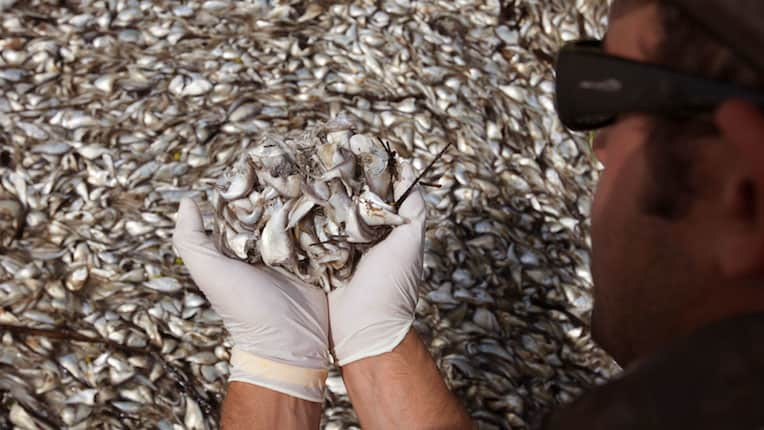Anglers Concerned about Green Bay “Dead Zone”
OutdoorHub Reporters 08.28.13

A region of water with dangerously low oxygen levels, also known as a “dead zone,” is troubling anglers and commercial fishermen in the Green Bay area. According to Fox 11, the recently discovered dead zone extends eight miles from the city of Green Bay and reaches Sturgeon Bay. The affected area could become uninhabitable for many fish, landing a hard blow to the local economy.
“We’re looking at 400 to 500 charters a year between Lake Michigan and the bay of Green Bay, that includes our ice fishing charters as well, that could be impacted by ‘dead zones’ if you will,” said Scott Gutschow, owner of a local charter operation. “[It’s] not just the economic impact to me, personally with two daughters, I look at the next generation of fishermen as one of my biggest concerns.”
Dead zones are often caused by algae die-offs, which in turn produce oxygen-consuming bacteria which feed on the dead algae. The process leaves large areas of water asphyxiated from the lack of oxygen, which forces wildlife to either flee or die. Earlier this summer, scientists were alarmed over the development of the traditional dead zone in the Gulf of Mexico, believed then to be the largest ever predicted. Unlike the Gulf, Green Bay has been recording plentiful fishing seasons over the last few years without the threat of a dead zone. Anglers and charter captains like Gutschow worry that this event could spell the end of what had been years of good fishing.
“I can’t speak to the degree of severity of it, but I know there are certain areas in the Gulf of Mexico where they’ve seen changes in fish population because of a ‘dead zone’ there,” said Rob McLennan, supervisor of water resources for the Wisconsin Department of Natural Resources (DNR). “And it’s not unreasonable to think there could be some fishery impacts here but whether they currently exist or in the future is yet to be determined.”
Experts say the the cause of the Green Bay dead zone lies in the phosphorus and other high-nutrition pollutants that have been leaking into the bay, accelerating algae populations. The DNR promises that a plan to protect the water is in the works.
“In the upcoming years, the public will see action on reducing the pollutants that are coming into the bay,” McLennan said.

